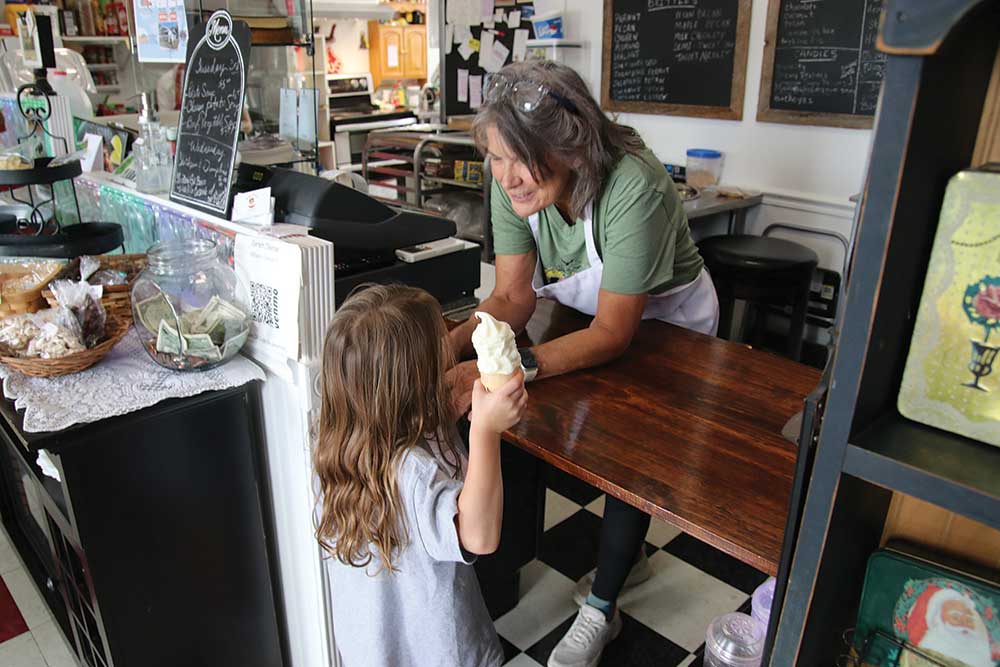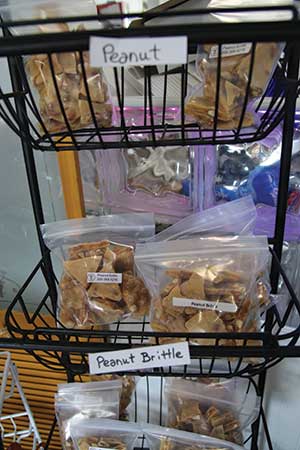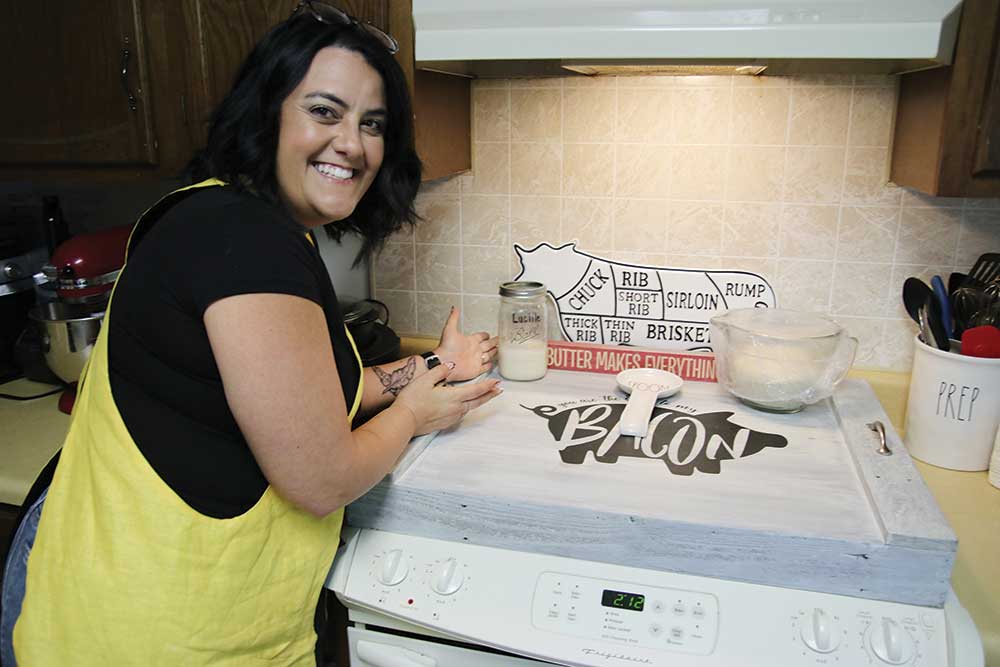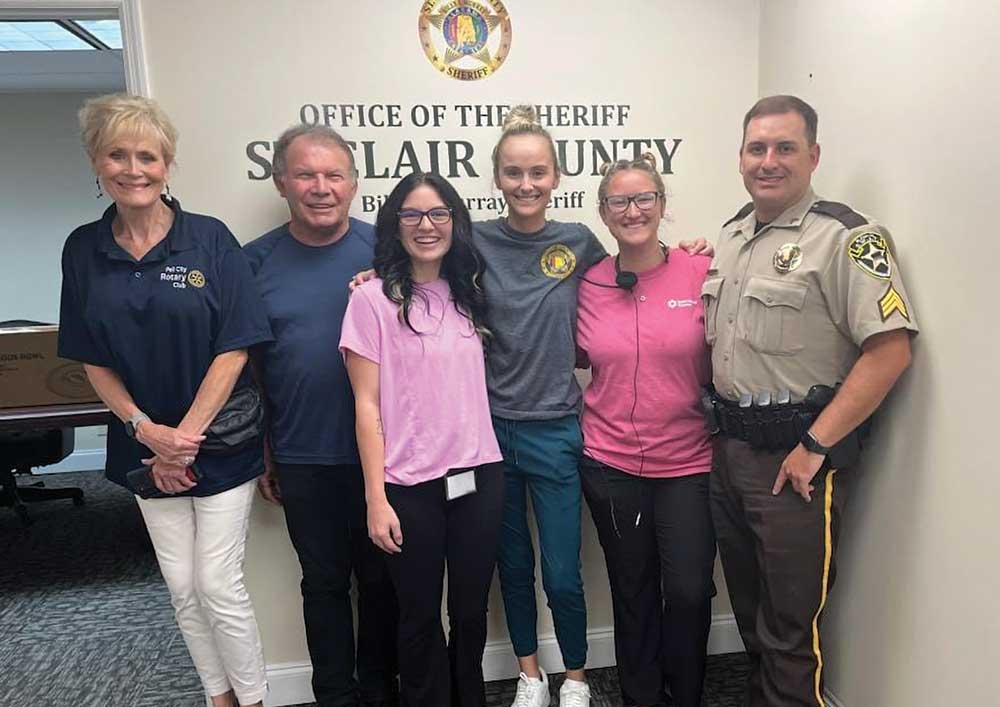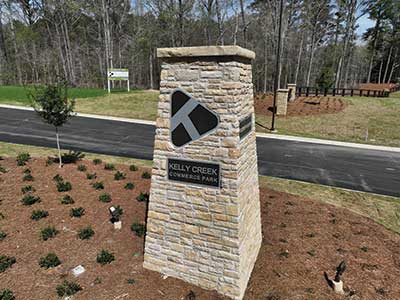Faith and family feed the sweet taste of success at Pell City eatery
Story by Paul South
Photos by Graham Hadley
Submitted photos
On Pell City’s Cogswell Avenue, there’s a sweet spot that fills hearts and tummies with comfort and joy with a combination of homemade candies, cookies and cakes, down home Southern dishes and soft serve ice cream shakes and malts.
And it all started as a cottage food business in Sarah Deese’s home kitchen.
The place is Brittle Heaven & More. And while it’s hundreds of miles from the 80-acre Arkansas farm where Deese’s mother, Sadie Miles, taught her time-tested, generations-old recipes, the spirit of that kitchen is never far away.
“I couldn’t have done it without her influence,” Deese said. “She would always let me help in the kitchen. And with the brittle, she would always let me help her during the holidays when we were making it to give out as Christmas gifts.”
She added, “She was an excellent cook, so we were always busy doing something.”
It seems that Deese and her staff are always busy, especially since she moved from her home kitchen in Pell City where she started in 2019, to a brick-and-mortar storefront that opened downtown in September 2021.
“I really had no idea that it would take off like it has,” Deese said. “My main goal was just to help my son, who was diagnosed with ulcerative colitis. He had a lot of doctor bills, hospital bills, student loans that he was having to pay for. I just wanted to help him out.”
Pardon the pun, but to Deese’s surprise, folks went nuts over the candy sparked by her dream.
“When you saw how it was received, it was kind of hard to stop,” Deese said, “because when you see you’re making people happy, you know you just want to keep making them happy.”
Brittle Heaven & More attracts that happiness with nut brittles of all kinds, old-fashioned confections like Martha Washington balls, Turtles, fudge, buckeyes and pecan Divinity and new creations like Almond Joy cookies, sweet treats not found in the grocery store.
“(Customers) say it reminds them of their grandmother or their grandfather, who used to make the brittle.”
But when Deese opened her brick-and-mortar shop, she knew she had to do more. So, she added cakes, pies and cookies, sourdough and banana nut bread to her growing basket of goodies.
Then came prepared meals. At J&S Country Store, she and Melissa Parker, a colleague she had met at an Alabama Cooperative Extension cottage foods course, began to make breakfasts, lunch and dinner, with daily specials customers could take home. Seating is limited.
“We try to specialize in home cooked plates,” Deese said. “Like today, we had chicken and rice and corn and tomorrow we’ll have meatloaf with mashed potatoes and green beans. Wednesday is chicken and dumplings.”
She added, “We don’t go all out meat and three. We just try to make whatever we do that day as a plate.”
Breakfasts feature omelets, breakfast burritos and croissants.
But Brittle Heaven & More is best known for its sweets. And for the weight conscious, she also has sugar-free offerings.
What drives the store’s popularity? Maybe it’s a longing for a taste of childhood and home.
“I guess people just love home-cooked food,” Deese said. “Everything we make is from scratch. You don’t find that everywhere. I think that’s one of the reasons we’re so well received. It’s different from the store bought.”
Deese and her team – something of a family itself – tries to create a warm, homey atmosphere. “We try to be as friendly as we can,” Deese said.
And with the holidays just around the corner, Brittle Heaven & More is gearing up for its busiest time of the year, when the shop’s high demand for sweets would make Buddy from the movie Elf sing at the top of his lungs.
Asked if there is a holiday hustle and bustle, Deese didn’t hesitate. Perhaps it would be best call it the “nuttiest time of the year.”
“Oh Lord, yes,” she said. It is the craziest time of the year. We have to shut down breakfast and lunch in November and December, especially December. We just can’t do anything except mostly make brittle and supply the store.”
Deese also gets a number of orders to ship out to other parts of the country.
“I’m just constantly making brittle during the holidays,” she said. “It’s almost 24-7.”
Deese is surprised by the store’s success.
“I feel like I gave birth to a baby, and I’m watching it grow,” she said. “Whenever we had the grand opening, I felt like that was the birthday. It’s just like a child. It’s going to grow slowly.”
Two years in, like any new parent, she knows what to expect. But in the stores’ early days, she admits, she didn’t even know how to run a cash register.
“Eventually, (the business) is going to carry itself,” she said. “In the beginning, I was thrown into a management position that I knew nothing about. All I knew is I wanted to make brittle.”
But those challenges have turned to joy. With her kids and grandkids grown and gone, she fills time with the business and her customers who have become friends.
And her staff has become family. Brittle Heaven & More has created four and sometimes five jobs for the local economy. Along with Parker, the staff includes River Goodwin, Tammy Ray and Gloria Todd. Niece Jada Wade helps when home from college and Deese’s sister, Frances Brown, pitches in during the holidays.
“That makes me happy” Deese said.
And like any successful business, she loves her customers.
“I love people. And it’s just inspiring to know that they appreciate our hard work. It inspires you to keep going. Anytime you feel appreciated, you want to do more.”
Deese cleaned houses for 28 years while raising her boys, Now in an empty nest at home, Brittle Heaven & More has provided sweet relief from boredom. And it’s kept customers happy and well fed.
Two ingredients fuel the business more than sugar and nuts, cinnamon and flour, chocolate and caramel. The first is faith.
“I gave God this business from day one,” Deese said. “I remind Him now and again that this is your business. I’m just in a position of managing it for Him. God has inspired me.”
The other key ingredient, a piece of counsel Sadie Miles gave her little girl in that Arkansas kitchen long ago, is more timeless than the recipes Deese and her staff cook up on Cogswell Avenue.
“Cook with love. If you don’t put that extra ingredient in it, you can really tell a difference.”











